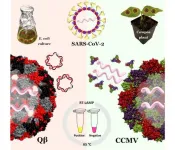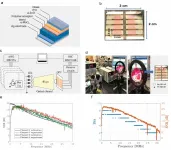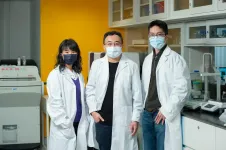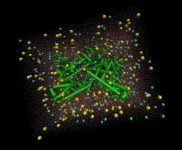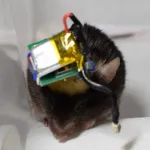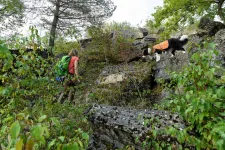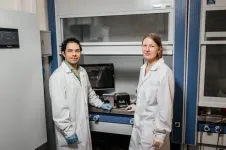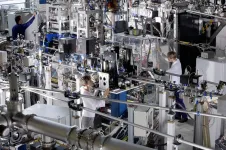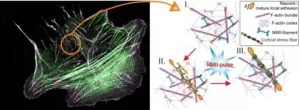UNESCO reveals largest carbon stores found in Australian World Heritage Sites
Australia's marine World Heritage Sites are among the world's largest stores of carbon dioxide according to a new report from the United Nations, co-authored by an ECU marine science expert.
2021-03-02
(Press-News.org) Australia's marine World Heritage Sites are among the world's largest stores of carbon dioxide according to a new report from the United Nations, co-authored by an ECU marine science expert.
The UNESCO report found Australia's six marine World Heritage Sites hold 40 per cent of the estimated 5 billion tons of carbon dioxide stored in mangrove, seagrass and tidal marsh ecosystems within UNESCO sites.
The report quantifies the enormous amounts of so-called blue carbon absorbed and stored by those ecosystems across the world's 50 UNESCO marine World Heritage Sites.
Despite covering less than 1 per cent of the world's surface, blue carbon ecosystems are responsible for around half of the carbon dioxide absorbed by the world's oceans while it is estimated they absorb carbon dioxide at a rate about 30 times faster than rainforests.
Australia a 'Blue Carbon' hotspot
Report author and ECU Research Fellow Dr Oscar Serrano said Australia's Great Barrier Reef, Ningaloo Coast and Shark Bay World Heritage areas contained the vast majority of Australia's blue carbon ecosystems.
"We know Australia contains some of the world's largest stores of blue carbon due to the enormous size and diversity of our marine ecosystems," he said.
"However here in Australia and around the world, these ecosystems are under threat from human development and climate change.
"While they're healthy, blue carbon ecosystems are excellent stores of carbon dioxide, but if they are damaged, they can release huge amounts of carbon dioxide stored over millennia back into the atmosphere."
Climate change turns up the heat on seagrass
In 2011 seagrass meadows in the Shark Bay World Heritage Site in Western Australia released up to nine million tons of stored carbon dioxide after a marine heatwave devastated more than 1000sqkm of seagrass meadows.
The UNESCO Report's authors have outlined the potential for the countries including Australia to use the global carbon trading market to fund conservation and restoration efforts at marine World Heritage Sites including here in Australia.
Dr Serrano said both Shark Bay and the Great Barrier Reef ecosystems are at risk due to climate change and human development.
"There are significant opportunities for both the Great Barrier Reef and Shark Bay to be protected and restored to ensure they survive and thrive in the future," he said.
"Australia also has plenty of marine ecosystems in need of protection not contained within a World Heritage Site which are worthy of our attention.
Money to be made in carbon market
Dr Serrano's previous research has highlighted the millions of dollars in potential conservation and restoration projects of blue carbon ecosystems while also helping Australia and other countries achieve their commitments to the Paris Climate Agreement.
INFORMATION:
The report was led by Professor Carlos Duarte and a team of collaborators from Australia, Saudi Arabia, Denmark, the United States, Kenya and the United Kingdom.
The UNESCO Marine World Heritage report is titled 'Custodians of the globes' blue carbon assets' and can be accessed at the UNESCO webpage.
ELSE PRESS RELEASES FROM THIS DATE:
2021-03-02
Rapid COVID-19 tests are on the rise to deliver results faster to more people, and scientists need an easy, foolproof way to know that these tests work correctly and the results can be trusted. Nanoparticles that pass detection as the novel coronavirus could be just the ticket.
Such coronavirus-like nanoparticles, developed by nanoengineers at the University of California San Diego, would serve as something called a positive control for COVID-19 tests. Positive controls are samples that always test positive. They are run and analyzed right alongside patient samples to verify that COVID-19 tests are working consistently and as intended.
The positive controls developed at UC San Diego offer several advantages over the ones currently used in COVID-19 testing: ...
2021-03-02
Around the world there are currently more than 18 billion internet-connected mobile devices. In the next 10 years, anticipated growth in the Internet of Things (IoT) and in machine-type communication in general, will lead to a world of hundreds of billions of data-connected objects. Such growth poses two very challenging problems:
How can we securely connect so many wireless devices to the Internet when the radio-frequency bandwidth has already become very scarce?
How can all these devices be powered?
Regular, manual charging of all mobile Internet-connected devices will not be feasible, and connection to ...
2021-03-02
A Hong Kong Baptist University-led (HKBU) research team has developed a novel drug which has the potential to become a next-generation treatment for cancers associated with Epstein-Barr virus (EBV).
The peptide-linked drug, which is responsive to the acidic environment found in tumours, is the first known agent to have successfully targeted two viral proteins that are simultaneously produced by EBV. It also offers a new strategy by increasing the uptake of anti-cancer drugs in tumour cells, thus allowing the application of lower drug dosages which helps reduce treatment side effects and health risks.
The research results were published in the international academic journal Advanced Science.
New drug targets ...
2021-03-02
Modern electronics is approaching the limit of its capabilities, which are determined by the fundamental laws of physics. Therefore, the use of classical materials, for example, silicon, is no longer able to meet the requirements for energy efficiency of the devices. Currently, it is necessary to start searching for new materials, new principles of electronic devices' functioning. To solve this problem, researchers of Peter the Great St.Petersburg Polytechnic University (SPbPU) are developing thin films, the elements for biomolecular electronics. Scientists believe that biological macromolecules such as nucleic acids, proteins, amino acids can become a promising material for modern ...
2021-03-02
Overview:
A research team at the Department of Electrical and Electronic Information Engineering, Department of Computer Science and Engineering, Department of Applied Chemistry and Life Science, and the Electronics-Inspired Interdisciplinary Research Institute (EIIRIS) at Toyohashi University of Technology has developed a lightweight, compact, Bluetooth-low-energy-based wireless neuronal recording system for use in mice. The wireless system weighs END ...
2021-03-02
A number of scientists whose work is inspired by natural behavior is constantly growing. The lotus flower, with its ability to self- clean, is commonly described in literature and can be best examples the trend. Researchers started to wonder why the flower behaves in this manner and they decided to study its structure with the use of microscopes. Hence, they could draw the conclusion that the structure is highly hydrophobic, i.e. it maintains water drops on the surface. Water then collects particles of dust and by flowing down, removes them by flowing down. It means the adhesion forces, those responsible ...
2021-03-02
The lists of Earth's endangered animals and plants are getting increasingly longer. But in order to stop this trend, we require more information. It is often difficult to find out exactly where the individual species can be found and how their populations are developing. According to a new overview study published in Methods in Ecology and Evolution by Dr Annegret Grimm-Seyfarth from the Helmholtz Centre for Environmental Research (UFZ) and her colleagues, specially trained detection dogs can be indispensable in such cases. With the help of these dogs, the species sought can usually be found faster and more effectively than with other methods.
How many otters are there ...
2021-03-02
TPU researchers jointly with their colleagues from foreign universities have developed a method that allows for a laser-driven integration of metals into polymers to form electrically conductive composites. The research findings are presented in Ultra-Robust Flexible Electronics by Laser-Driven Polymer-Nanomaterials Integration article Ultra-Robust Flexible Electronics by Laser-Driven Polymer-Nanomaterials Integration, published in Advanced Functional Materials academic journal (Q1, IF 16,836).
"Currently developing breakthrough technologies such as the Internet of Things, flexible electronics, brain-computer interfaces will have a great impact on ...
2021-03-02
The key are the ultra-fast flashes of light, with which the team led by Dr. Friedrich Roth works at FLASH in Hamburg, the world's first free-electron laser in the X-ray region. "We took advantage of the special properties of this X-ray source and expanded them with time-resolved X-ray photoemission spectroscopy (TR-XPS). This method is based on the external photoelectric effect, for the explanation of which Albert Einstein received the Nobel Prize in Physics in 1921.
"For the first time, we were able to directly analyze the specific charge separation and subsequent processes when light hits a model system such as an organic solar cell. ...
2021-03-02
Research groups at the University of Helsinki uncovered how motor protein myosin, which is responsible for contraction of skeletal muscles, functions also in non-muscle cells to build contractile structures at the inner face of the cell membrane. This is the first time when such 'mini-muscles', also known as stress fibers, have been seen to emerge spontaneously through myosin-driven reorganization of the pre-existing actin filament network in cells. Defects in the assembly of these 'mini-muscles' in cells lead to multiple disorders in humans, and in the most severe cases to cancer progression.
A new study published in eLife, drills into the core mechanisms of stress fiber assembly, and reveals how stress fibers can be built directly ...
LAST 30 PRESS RELEASES:
[Press-News.org] UNESCO reveals largest carbon stores found in Australian World Heritage Sites
Australia's marine World Heritage Sites are among the world's largest stores of carbon dioxide according to a new report from the United Nations, co-authored by an ECU marine science expert.
